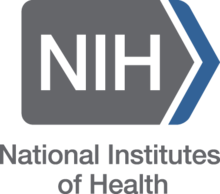Breadcrumb
- Home
- Get Help
- Newsletters
- June 2023 IRB Connection Newsletter
June 2023 IRB Connection Newsletter
Best Practices: Responding to IRB Meeting Minutes
Herky Hint: Protocol Amendments
Do You Want to Build a Snow(ball sample)?
Opening the Door: Accessibility and the IRB
NIH Rebroadcast: NIH Campus Interactive Virtual Tour
Medical Ethics Advisor Newsletter, May 2023
In the News
Best Practices: Responding to IRB Meeting Minutes
By Kelly O’Berry, BS, CIP
Federal regulations (45 CFR 46.115(a)(2)) require IRB meeting minutes to capture discussion of any controverted issues, required actions and regulatory citations. This article provides recommendations for researchers to address required actions and obtain IRB approval as quickly and smoothly as possible after receipt of IRB meeting minutes.
IRB Determinations that Require Action or Response
There are two possible outcomes after a form is reviewed by the full convened board that require action or a response from the Principal Investigator (PI).
- Approval with conditions – There are some changes required for the IRB to determine that the project meets the Criteria for IRB Approval (45 CFR 46.111), and they are straightforward enough to specify in the IRB meeting minutes. The UI IRB refers to these conditions as “required actions” because they must be addressed to obtain IRB approval.
- IRB review of the project is “tabled” – There are changes required for the IRB to approve the project based on the Criteria for IRB approval (45 CFR 46.111), and the IRB requires more information from the PI to address concerns and/or assure the IRB that criteria for approval have been met. Once the PI provides this information, the study goes back to a convened meeting for review and discussion of this information is described in the meeting minutes.
The IRB communicates all determinations and required actions in the IRB meeting minutes.
Access to IRB Meeting Minutes
When meeting minutes are complete and attached to the HawkIRB application, the agenda date on the Project Summary page becomes a hyperlink to the minutes. when the IRB Application Analyst routes the form back through HawkIRB Workflow to address any required actions , the HawkIRB system sends an email notice to the PI, their HawkIRB Delegates for the project, and Contact Persons on the research team.
Prior to IRB approval, the process to access IRB meeting minutes varies by role:
- Principal Investigator – Click the link in the email message to go to the HawkIRB log-in page to access workflow correspondence. In the Inbox section, at the top, click the ‘wkflw’ link on the right side of the page. There is a link to the IRB meeting minutes at the top of the page.
- HawkIRB Delegates – Log in to HawkIRB and then log in as a Delegate for the PI. Follow the directions in the PI section above to access the minutes from the PIs inbox.
- Contact Persons – Even though Contact Persons receive the HawkIRB notices, only the PI and their HawkIRB Delegates can access the meeting minutes prior to IRB approval of the form. Contact Persons can only access meeting minutes AFTER the form is approved.
After IRB approval, the PI, HawkIRB Delegates, and all team members can access meeting minutes in the ‘History’ section of the Project Summary page.
Address Required Actions
The most important part of addressing required actions is to carefully read the meeting minutes in their entirety. The required actions are at the beginning, but don’t stop there! The rest of the minutes provide background, justification, and regulatory references (if applicable) for these requests. This is intended to help researchers understand the requested actions and how to complete them.
Additional tips for addressing required actions:

- Use the minutes as a checklist to complete all required actions.
- Save changes in the form – Click one of the save buttons at the top or bottom of the page when you make any changes in the application.
- Use the three-step Edit function to revise attached documents. – This saves the new version on top of the previous version.
- PI review of changes – If a HawkIRB Delegate makes the requested changes, the PI reviews them prior to returning the form through Workflow.
- Contact the Application Analyst with questions about required actions. – Use the contact information on the Workflow page.
- Click ‘Index/Save’ to make sure all questions are answered. – Sometimes changes in the form open additional questions. Yellow sections in ribbon at the top of the index indicate that there are unanswered questions.
- Go back to the Workflow page to route the form back to the IRB – Use the yellow file box to the left of the PIs name in the upper right corner of the page.it media
The IRB review process is ‘on hold’ until the required actions are complete and the form is routed back to the IRB. Completing required actions in a timely manner ensures the shortest possible timeline for IRB approval.
- Requesting extra time – It is acceptable to ask for extra time to address required actions. Simply state how much time you need and why in workflow. The HSO staff member will note the request and return the project form to you to address the required actions.
Next Steps in the IRB Review Process
Required Actions Complete
When the researcher routes the form back to the IRB, the Application Analyst checks to make sure all required actions were addressed. If so, the IRB Chair can approve the form and the research can begin.
Required Actions Not Complete
If required actions are not completely addressed, the Application Analyst will route the form back to the PI. This causes unnecessary delays in the IRB review process. Once complete, the IRB Chair can approve the form.
There are legitimate instances when a PI may not be able to complete a required action. Perhaps the HawkIRB application did not include certain information about the project or an aspect of the study was not described in sufficient detail.
The PI should make any necessary updates to the HawkIRB application and provide a written appeal with justification and/or additional information for IRB consideration. An appeal must be reviewed by the IRB at a convened board meeting. An IRB Chair cannot approve an appeal to a determination made by the IRB. The Application Analyst will schedule the form to the next available IRB meeting. We typically invite the PI to attend or be available to take questions during the meeting.
Conclusion
To minimize delays in the IRB review process, complete all required actions from IRB meeting minutes in a timely manner. If you need assistance with addressing required actions, contact the Application Analyst directly using contact information on the Workflow page or come to IRB Office Hours via Zoom.
Herky Hint: Protocol Amendments
By Rachel Kinker, MPA
To submit a modification or an amendment to a protocol, select the project number and, under ‘Create Form,’ select ‘Modification /Update Form’. This will direct you to the ‘Project Summary’ page of the ‘Modification/Continuing Review Form’. Amending the protocol is not available as a frequent modification, so you will need to click on the ‘Project Index’ tab.
Once re-directed, select section VII.B and select ‘Intervention, Physiology Study VII.B. 11-VII.B.17’. What you indicate in sections VII.B.14-17 will appear on the IRB approval memo. The version number and amendment number should increase sequentially if a new version/amendment of the protocol is submitted to the IRB in the future.
Complete sections VII.B 14-16 and leave 17 blank unless you are submitting an amendment. If you are submitting an amendment, the number should increase in sequence. Make sure that the amendment number corresponds to the information that the sponsor is providing.
If you receive two amendments at the same time, make sure to notify the IRB that they need to look at both amendments. The approval memo generated after approval will list only the second amendment; the first will not appear on the generated form. If documentation of the first amendment is required, contact the IRB at irb@uiowa.edu. When making an amendment you could run into an issue where the protocol version number or the amendment number are not in sequential order. For example, if the sponsor modifies the protocol and the changes do not apply to your site (i.e. changes only apply to an international site) then you might not submit the amendment to the UI IRB and then the next amendment and protocol version might not be in sequential order (i.e. amendment number 3 from the sponsor but only amendment number 2 for your site). When possible, follow the amendment numbering to correspond with documentation provided by the sponsor.

Do You Want to Build a Snow(ball sample)?
By Shane D. Soboroff, PhD

Snowball sampling involves asking research subjects to aid researchers in recruiting other subjects. This sampling method is often employed by researchers seeking access to hard-to-find subject populations or to recruit only those subjects that meet very specific inclusion criteria. The UI IRB prefers that researchers ask subjects to provide prospective subjects with IRB-approved study information, rather than provide information about non-subjects to the researcher. The UI IRB allows snowball sampling practices that protect the rights and welfare of both current and prospective subjects. This article discusses methods for snowball sampling that are acceptable (and unacceptable) to the IRB.
IRB Recruiting Policy
The University of Iowa IRB Standard Operating Procedures and Investigator Guide Section II, Part 11 provides policies related to recruitment materials and methods. This section details what can be included in recruiting materials, what information can be obtained about subjects while recruiting, and suggestions for crafting successful recruiting strategies. Building a snowball sample may be as simple as asking subjects to name others who might be approached about the study. Alternatively, it might involve subjects acting as a go-between, providing recruitment materials to prospective subjects, or distributing the researcher’s contact information. Researchers should ask subjects to provide prospective subjects with IRB-approved study information, rather than provide the researcher with information about non-subjects.
Asking for names may be appropriate if studying public figures, such as CEOs, academics, politicians, or other well-known community members for whom contact information is readily available. In these cases, subjects are not asked for information about prospective subjects that would be considered private. Greater caution is needed if private contact information is required to recruit a prospective subject. In this case, a researcher might provide current subjects with IRB approved recruiting materials to distribute to prospective subjects. If so, these materials should include information such as:
- The purpose of the study.
- The time commitment required of subjects.
- Principal investigator name and contact information.
- Who is eligible to participate.
- A list of benefits, if any.
For ethnographic work, use of formal recruiting materials may not be the best practice. However, researchers should always consider the potential risks associated with snowball sampling to both current and prospective subjects. Some cultures may view a community member acting as a point of contact between a researcher and other members as inappropriate. Alternatively, prospective subjects may only wish to interact with the researcher if a currently enrolled subject is present to vouch for the researcher and the study. The IRB may require a local context review and additional information to determine a particular study’s level of risk to subject privacy and confidentiality.
The IRB may also assess whether a subject is serving as an informant engaged in research and requires additional training as a member of the research team. If a subject is authorized to answer questions about the research study, collects data about or from other subjects, or has any decision-making authority related to the study, they need to be designated as a non-UI member of the research team and receive proper human subjects protection training. However, if someone who already served as a subject only provides basic descriptive information about the study to prospective subjects, they do not need to be named on the research team.
In general, snowball sampling has the fewest ethical issues when researchers provide IRB-approved recruitment materials for subjects to share with people who may qualify for the study. Prospective subjects then contact the research team directly. This allows the research team to ensure that (1) only team members are engaged in informed consent procedures, (2) risks to subject reputation are minimized, and (3) information about prospective subjects and their participation is confidential. Subjects should not be required to pass study information (including basic descriptions of the study or researcher contact information) to receive the benefits of study participation or to receive compensation to which they would otherwise be entitled.
For studies that investigate sensitive topics or enroll subjects from vulnerable populations, researchers should describe privacy protections for enrolled and potential subjects. Further, when obtaining sensitive information, especially from members of vulnerable populations, researchers must explain how they will maintain data security and confidentiality protections for paper and electronic records. For federally funded research through NIH, obtaining a Certificate of Confidentiality to avoid being compelled to divulge private or confidential information gathered from research during legal proceedings may be prudent. See the NIH website for additional information.
What will not be approved?
The IRB is unlikely to approve sampling procedures that solicit private contact information for prospective subjects from current subjects. Obtaining private information and using it to contact prospective subjects without informing them about the study ahead of time is equivalent to “cold calling,” which violates UI IRB policy. The IRB also does not generally approve compensation for individuals to provide the contact information of others (i.e. “finder’s fees”), including extra credit to students for referrals. Additionally, studies should not plan on paying research subjects when a referral leads to enrollment of a new subject, as this could reveal the identities of other participants to subjects.
Summary
Snowball sampling is an important tool for building theoretically useful samples and locating hard-to-reach populations. The IRB approves snowball sampling procedures that protect the privacy and confidentiality of current and prospective subjects and minimizes coercion and undue influence in recruitment efforts. Fully describe all recruiting methods and provide your recruiting materials in HawkIRB applications to facilitate efficient IRB review.
Opening the Door: Accessibility and the IRB
By Shane D. Soboroff, PhD
Federal and state laws and university policies ensure all members of the University of Iowa community the opportunity to participate in the life of the institution. This includes individuals with disabilities who may require reasonable accommodations to access university resources. It also includes individuals who may need resources to participate in research, such as document translation or the services of an interpreter. This article discusses available technologies and services that promote the ethic of accessibility.
Accessibility: Ethics and Laws
Accessibility means that individuals with disabilities are able to independently acquire the same information, engage in the same interactions, and enjoy the same services within the same timeframe as individuals without disabilities, with substantially equivalent ease of use. The University of Iowa provides accessibility resources to both employees and students. These resources reflect University values and the Americans with Disabilities Act (ADA), both of which ensure members of the University community of their right to participate fully in the institution.
Accessibility Promotes Ethical Human Subjects Research
The Belmont Report that serves as the basis for the Common Rule (45 CFR 46), identifies ethical principles that guide IRB review and approval criteria. Among these principles are respect for persons and justice.

Respect for persons forms the basis for informed consent processes. This principle requires that research subjects be informed of the risks and benefits associated with research participation. It also requires prospective subjects be given the opportunity to voluntarily consent (or have a legally authorized representative consent on their behalf) to participate in a research study. To make informed consent forms accessible, researchers should:
- Prepare forms at a reading level appropriate to the sample population.
- Provide documents translated into a language the subject understands, provide an interpreter, or allow for the subject to bring someone with them who can help them understand study documents.
- Consider how a disability might affect the subject’s capacity to consent during the study.
Justice requires that researchers consider whether their study makes certain groups bear the burden of risks associated with a study or, alternatively, excludes certain groups from benefitting from participation. If eligibility and exclusion criteria for a study allow for recruitment and enrollment of subjects with disabilities, justice would suggest that reasonable efforts be made by the researcher to facilitate the participation of those subjects:
- If practicable, use accommodations for individuals who are hearing or vision impaired.
- Conduct research in locations that are ADA-compliant and accessible.
- Provide materials to prospective subjects about resources available to help them participate in research prior to the informed consent conversation.
The University of Iowa offers consultation on accessibility, including for technologies that might be used in research. Visit www.uiowa.edu/accessibility and itsecurity.uiowa.edu/itaccessibility to learn more. Researchers should budget for technologies and training allowing them to enroll members of populations requiring accommodations if individuals with disabilities are included in the sample population for their study. Explain how these accommodations will be provided in HawkIRB and include any attachments reflecting alterations to forms and data collection instruments related to accommodations for subjects with disabilities.
NIH Rebroadcast: NIH Campus Interactive Virtual Tour

NIH recently announced the release of a new virtual tour of the NIH campus. This interactive feature can be accessed at https://www.nih.gov/virtual-tour/ and features information related to many aspects of NIH operations. As visitors view images from 32 buildings, 20 in-depth virtual “stops” offer videos highlighting NIH leadership and scientists. Visitors can choose to view the entire tour, or special “tracks” with information on:
- NIH clinical trials information for patients and caregivers
- Employment opportunities
- Collaborations with NIH
- Trainings offered through NIH
Questions about the virtual tour can be sent to the NIH Office of Communications and Public Liaison.
Medical Ethics Advisor Newsletter, May 2023
By Rachel Kinker, MPA

Medical Ethics Advisor (a publication of Relias, LLC) is a monthly newsletter with articles about human subjects research and medical ethics. Current and past issues of Medical Ethics Advisor and IRB Advisor are posted in the “IRB ICON Course for Researchers.” The portal to this ICON Course is on the Education and Training page of the Human Subjects Office website. This month we are spotlighting some articles about human subjects research from the May 2023 Medical Ethics Advisor Newsletter.
Failure to Report Study Findings in Timely Manner Erodes Public Trust
Investigators are required to submit results to ClinicalTrials.gov within 12 months of completion for NIH funded trails. This is required because medical journals often publish studies in which the investigational intervention is shown to be superior to the control. The reasoning and concern behind this requirement is that researchers often hear of positive study findings, but may not hear of perceived negative findings. The goal of ClinicalTrials.gov is to have a publicly accessible database that provides the public with both positive and negative study results. Many trials are registered on ClincalTrials.gov but only 64.1% were prospectively registered with many researchers failing to submit their results in a timely manner. The NIH mandates that all clinical trials be registered on ClinicalTrails.gov. This provides an opportunity for researchers and participants to see the results of a study as soon as they are available instead of having to wait for the results to be published in a journal. Failure to report can result in monetary penalties and can also limit the ability of researchers to build upon knowledge generated from previous research, leading to the duplication of research efforts.
Articles in the May 2023 Issue:
- Lack of Funding, Salary Support for Ethics Consultation Work
- New Ethical Guidance on End-of-Life Nutrition Therapy
- Ethicists Can Resolve Conflicts Over Nutrition Therapy at End of Life
- Ethicists’ Role if Clinicians Disregard Documented End-of-Life Wishes
- Wrongful Prolongation of Life Suits Persist, Even When a Patient’s Status Was DNR
- Living Donor Liver Transplant Raises Multiple Ethical Questions
- Use Caution When Leveraging Exception from Informed Consent Rule
- Personal Connections Are Crucial When Recruiting from Underrepresented Groups
- Inconsistent Transparency on Physician Sexual Misconduct Allegations

In the News, June 2023

- LGBTQIA+ Equity in Human Subjects Research Review: Acknowledging the Whole Research Participant, Ampersand, The PRIM&R Blog
- A Weird Research-Misconduct Scandal About Dishonesty Just Got Weirder, The Chronicle of Higher Education
- Daily Multivitamin May Enhance Memory in Older Adults, NIH
- Anti-trans bills and political climates are taking a significant mental health toll on trans and nonbianary people-even during Pride, The Conversation
- Bloated patient records are filled with false information, thanks to copy-paste, STAT